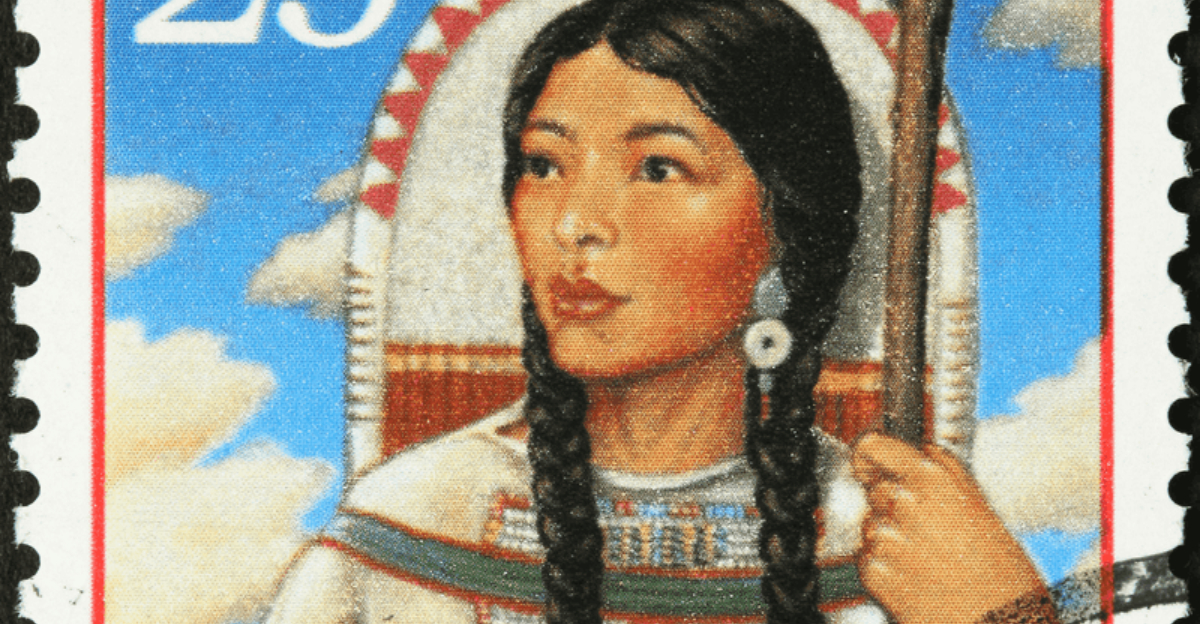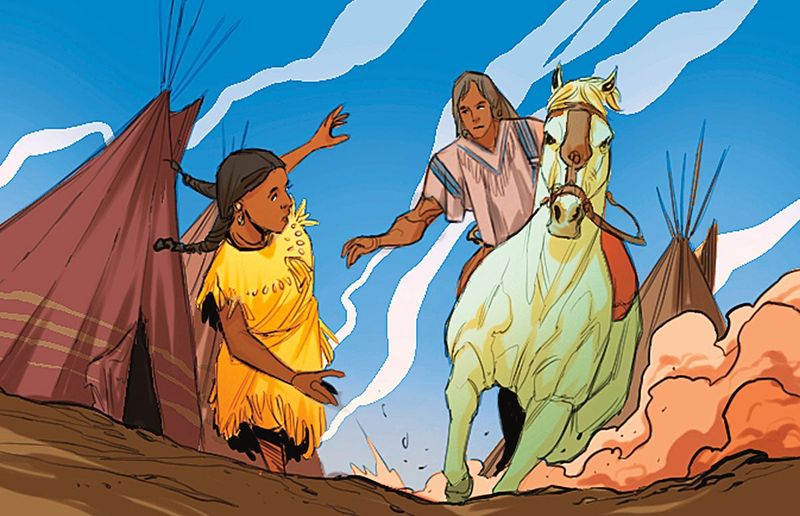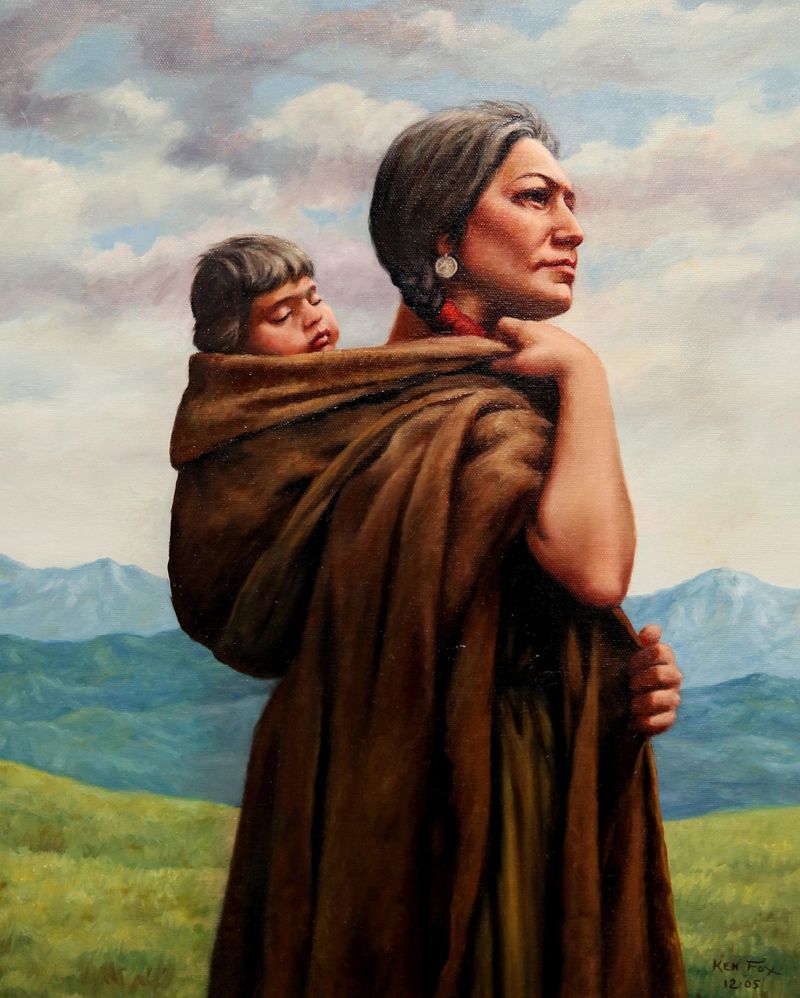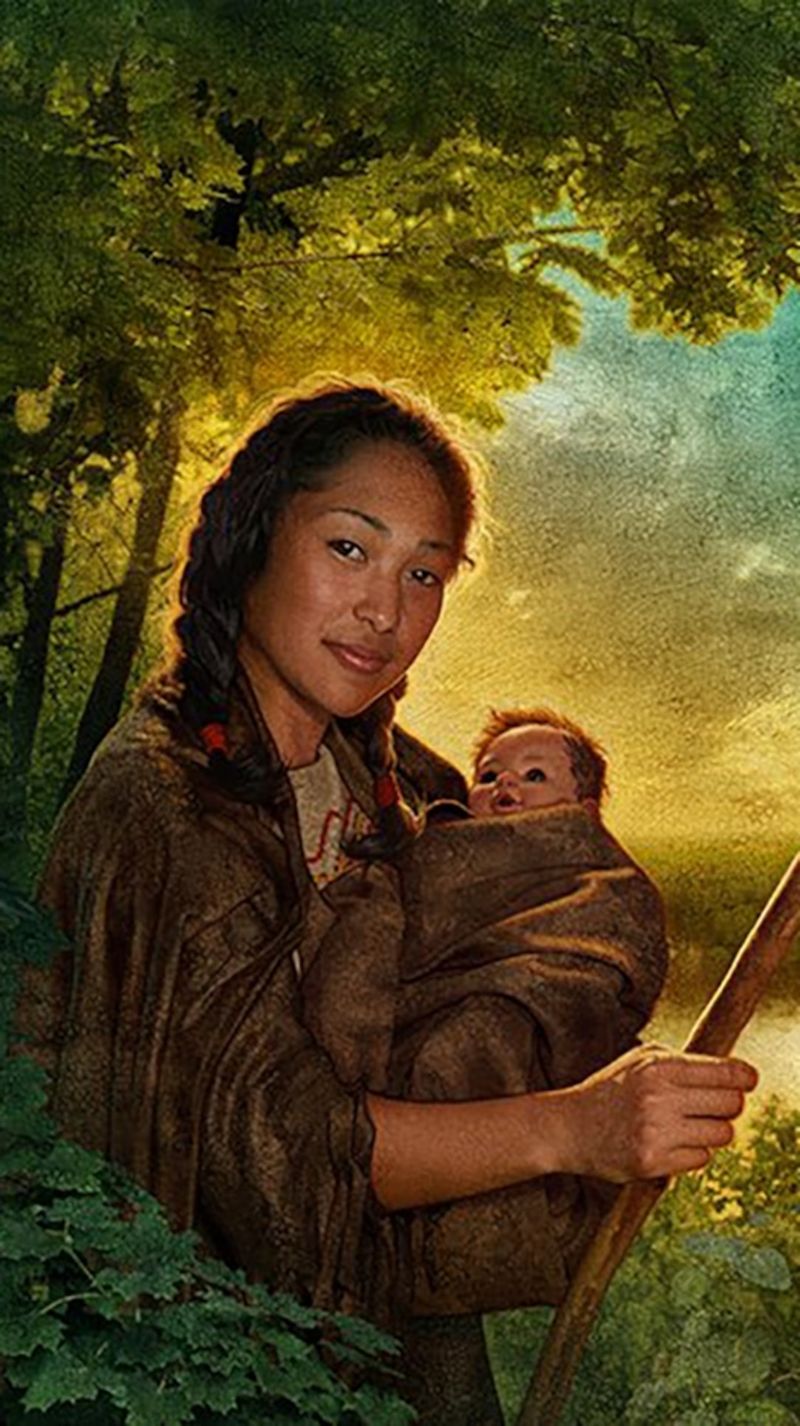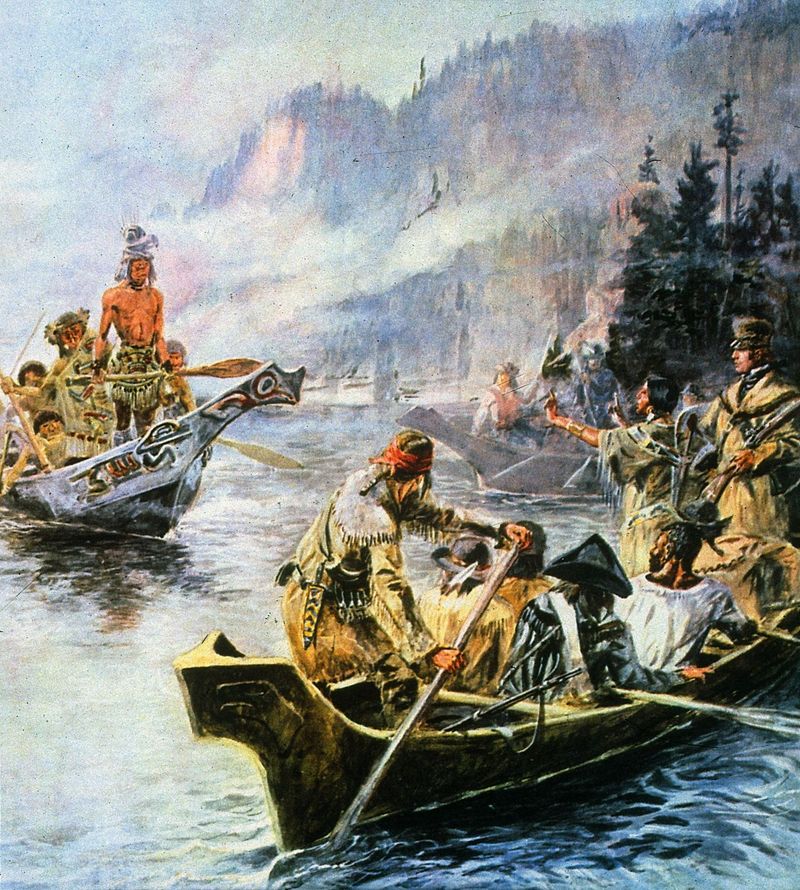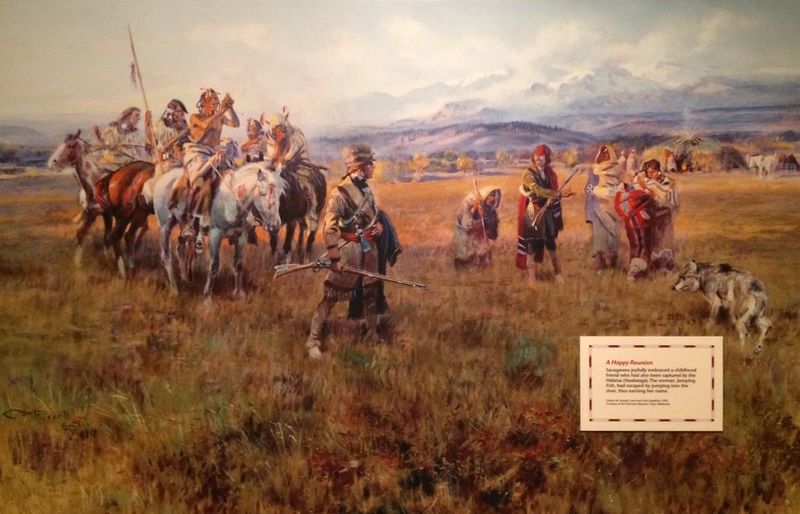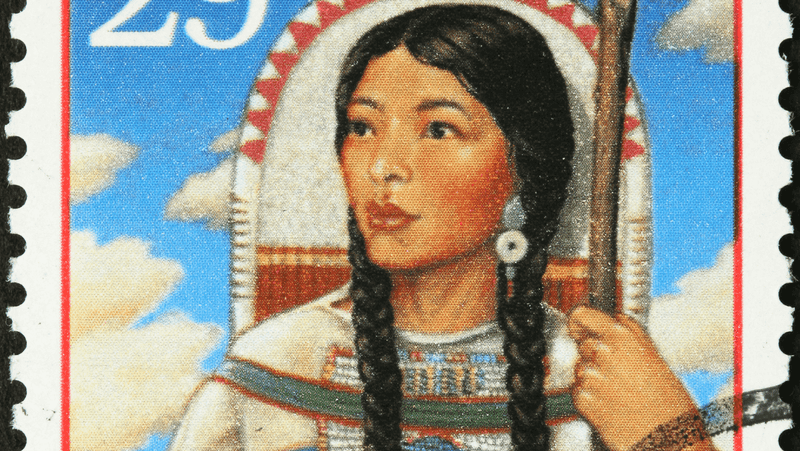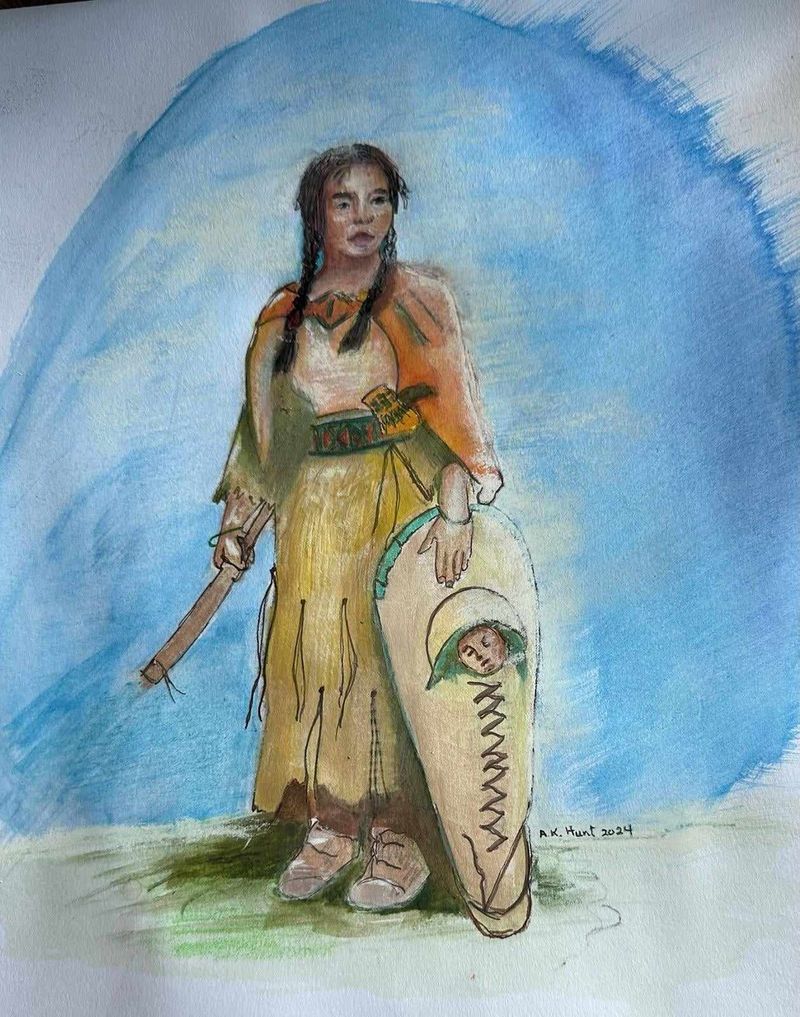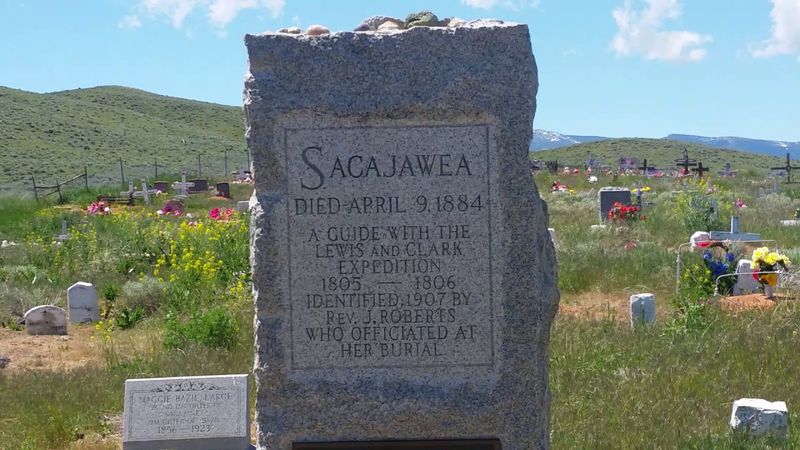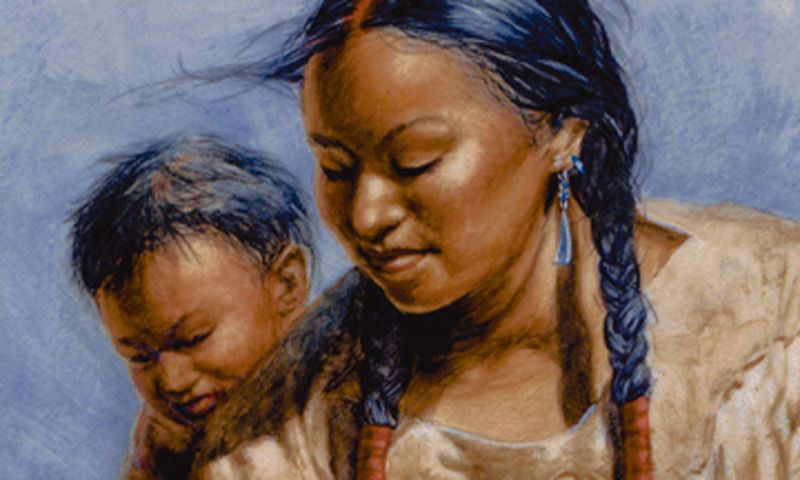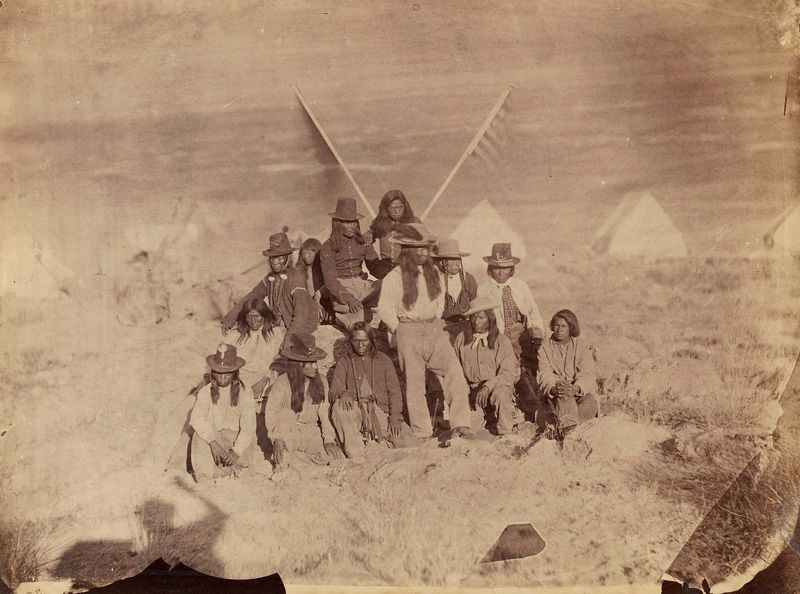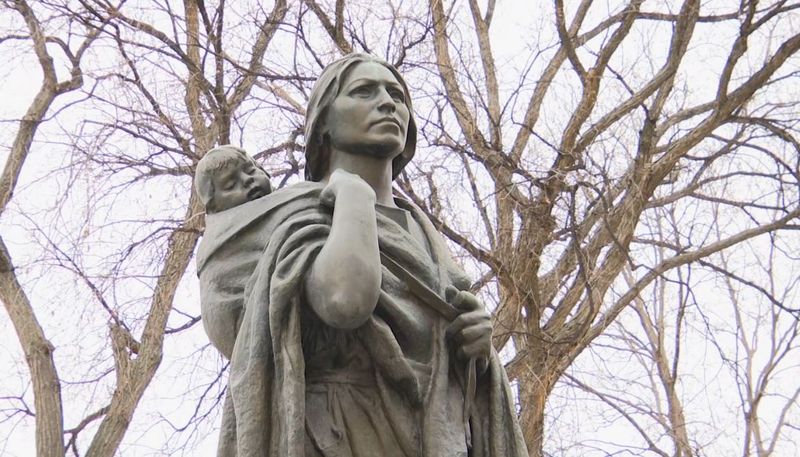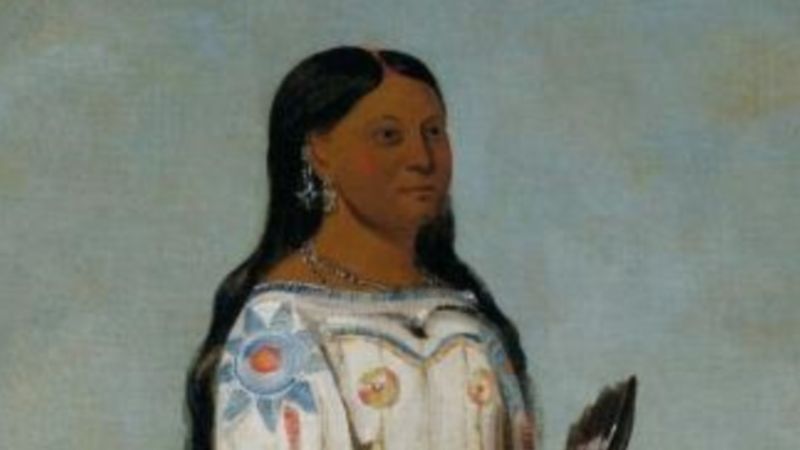Sacagawea’s story goes far beyond the simplified version many of us learned in school. This young Shoshone woman played a crucial role in one of America’s most important journeys—the Lewis and Clark expedition. Her contributions helped shape a young nation during its westward expansion, though her story has often been misunderstood or overlooked.
1. Childhood Stolen: Sacagawea’s Kidnapping
Young Sacagawea’s life changed forever around 1800 when Hidatsa raiders attacked her Shoshone village in Idaho. Just 12 years old, she was violently taken from her family and forced to travel hundreds of miles to what is now North Dakota.
The trauma of being ripped from her community would shape her future interactions and remarkable adaptability. Despite this devastating beginning, she developed survival skills that would later prove invaluable during the Lewis and Clark expedition.
Her early displacement gave her unique cultural understanding spanning multiple tribal territories—knowledge few expedition members possessed.
2. Traded Like Property to a Fur Trader
After her kidnapping, Sacagawea’s status further deteriorated when she was sold to Toussaint Charbonneau, a middle-aged French-Canadian fur trader. He acquired her as one would purchase goods—not as an equal partner but as property.
Charbonneau already had another young Native wife, highlighting the common practice of treating Indigenous women as commodities. For Sacagawea, becoming his wife meant surviving in a strange new world where she had little agency.
This arrangement, while deeply troubling by modern standards, ultimately positioned her to join the Corps of Discovery when Lewis and Clark hired Charbonneau as an interpreter.
3. Motherhood on America’s Greatest Journey
When Lewis and Clark met Sacagawea in 1804, she was heavily pregnant at just 16 years old. She gave birth to her son Jean Baptiste Charbonneau (nicknamed ‘Pomp’) in February 1805 at Fort Mandan, with Captain Lewis reportedly helping during the difficult labor.
Just two months after giving birth, she began the grueling expedition westward. Picture this teenager traversing mountains and rapids with an infant strapped to her back in a cradleboard.
Her determination stands as one of history’s most remarkable feats of motherhood—caring for a newborn while helping navigate an unmapped continent under extreme conditions.
4. Her Baby: The Expedition’s Secret Weapon
Little Jean Baptiste became an unexpected diplomatic asset. Native tribes who encountered the Corps of Discovery immediately recognized that no war party would travel with a woman and infant, helping defuse potentially dangerous situations.
Captain Clark noted this phenomenon in his journals, writing that the presence of mother and child signaled peaceful intentions better than any words could. Suspicious tribal leaders would visibly relax upon seeing Sacagawea with her baby.
The infant became the youngest member of the Corps of Discovery and likely traveled more miles before his first birthday than most Americans did in their entire lives during that era.
5. Master Translator in a Chain of Languages
Communication during the expedition required an intricate language relay that would be nearly impossible today. When Lewis and Clark needed to speak with Shoshone tribes, they would tell Sacagawea’s husband Charbonneau in French, who would translate to Hidatsa for Sacagawea, who would then translate to Shoshone.
This complex chain worked in reverse for responses. Despite this convoluted process, vital negotiations succeeded because of her linguistic abilities.
Without modern translation technology or common languages, her skills prevented potentially deadly misunderstandings and facilitated crucial exchanges that kept the expedition moving forward through territories where no European-Americans had traveled before.
6. The Miraculous Family Reunion That Saved the Expedition
Fate delivered an astonishing moment when the expedition desperately needed horses to cross the Rocky Mountains. Upon meeting the Shoshone tribe who possessed these crucial animals, Sacagawea recognized their chief, Cameahwait, as her long-lost brother.
Witnesses described her trembling with joy, throwing her blanket over him and weeping as they embraced after years of separation. This emotional reunion transformed a tense negotiation into a family affair.
Her brother’s willingness to provide horses literally saved the expedition from potential failure. Without this extraordinary coincidence, Lewis and Clark might never have completed their journey to the Pacific.
7. Quick Thinking That Preserved American History
Disaster struck on May 14, 1805, when a sudden squall nearly capsized one of the expedition’s boats on the Missouri River. While men panicked, Sacagawea calmly gathered floating papers, instruments, books, and medicines from the water.
These weren’t just ordinary items. The journals and maps she saved would become foundational documents in American history, containing irreplaceable observations and the only records of newly discovered species.
Captain Lewis later wrote that her “fortitude and resolution” in this crisis exceeded that of the men. Without her quick action, much of what we know about the expedition might have been lost forever.
8. The Myth vs. Reality of Her Role
Popular culture often portrays Sacagawea as the expedition’s primary guide, pointing the way across the continent. The reality was more nuanced—she wasn’t hired as a guide but provided crucial geographical knowledge in specific regions she recognized from childhood.
Her most valuable contributions came through her cultural expertise, language skills, and ability to identify edible plants when food supplies dwindled. The romanticized image of her leading the expedition perpetuates a simplified narrative.
She was part of a complex network of Native informants, hired guides, and expedition members who collectively navigated the journey. Her actual contributions were arguably more impressive than the mythologized version.
9. Unpaid for Her Historic Contributions
When the expedition concluded in 1806, every man received payment and land grants for their service. Sacagawea received nothing. Her husband Toussaint Charbonneau collected $500.33 and 320 acres of land while she—despite her crucial contributions—was considered merely his wife, not a corps member deserving compensation.
This glaring inequity reflects the period’s attitudes toward both women and Native Americans. Captain Clark later invited the family to St. Louis, offering to educate Jean Baptiste—acknowledgment of her value without financial recognition.
Her unpaid labor represents countless Indigenous and female contributions erased or minimized throughout American history.
10. From Historical Figure to Cultural Icon
Sacagawea’s transformation from historical person to powerful symbol began in the early 20th century. Suffragists championed her as proof of women’s capabilities during their fight for voting rights, highlighting her courage and intelligence.
The feminist movement later embraced her as representing both female and Indigenous strength against patriarchal systems. Her image on the golden dollar coin introduced in 2000 made her the first woman and first Native American to appear on circulating U.S. currency.
She now appears in countless sculptures, paintings, and place names across America—evolving from a footnote in expedition journals to a powerful representation of marginalized groups who helped build the nation.
11. The Rarity of Her Expedition Presence
Sacagawea’s participation in the Corps of Discovery broke extraordinary barriers in early American exploration. Female presence on wilderness expeditions was virtually unheard of—especially Native women participating in government-sponsored missions.
The European-American explorers initially viewed having a woman along as a potential burden. Their journals later revealed growing respect as she demonstrated remarkable endurance through conditions that challenged even the toughest men.
She traversed nearly 5,000 miles of wilderness while caring for an infant, crossing raging rivers, scaling mountains, and enduring extreme weather—all during an era when women were considered too fragile for such endeavors.
12. The Mystery of Her Final Resting Place
Sacagawea’s death remains one of American history’s enduring mysteries. The traditional account claims she died of “putrid fever” (likely typhoid) in 1812 at Fort Manuel in South Dakota, aged just 25. Captain Clark himself noted her death in his records.
Yet a competing narrative emerged from Wind River Reservation in Wyoming, where oral histories tell of a Shoshone woman named Porivo who claimed to be Sacagawea, living into her 90s before dying in 1884. Some descendants firmly believe this account.
This historical uncertainty reflects the challenges of documenting Native American lives during this period and demonstrates how her story exists in both written and oral traditions.
13. Her Son’s Remarkable European Adventure
Jean Baptiste Charbonneau’s life took an extraordinary turn when Captain William Clark became his guardian after Sacagawea’s presumed death. Clark provided the education he had promised her, but the boy’s adventures were just beginning.
In 1823, at age 18, Jean Baptiste met German Prince Paul Wilhelm of Württemberg in St. Louis. Impressed by the young man’s intelligence and multicultural background, the prince invited him to Europe, where he lived for six years learning multiple languages and moving in royal circles.
The son of a kidnapped Shoshone girl dined with European nobility and received an education few Americans of any background could access during that era.
14. Mountain Navigator With Lifesaving Knowledge
The expedition’s most perilous challenge came when facing the snow-covered Rocky Mountains. Having grown up in this region before her kidnapping, Sacagawea recognized landmarks that helped identify crucial mountain passes that weren’t on any maps.
When winter threatened and food supplies dwindled, she identified edible plants and roots unknown to the European-American explorers. Captain Lewis documented her finding wild artichokes buried by mice in their underground caches—knowledge that prevented starvation.
Her familiarity with the harsh mountain environment proved critical during the most dangerous segment of the journey, when wrong turns could have meant death for the entire party.
15. Cultural Ambassador Between Worlds
Beyond translation, Sacagawea served as a cultural interpreter explaining Native perspectives to Lewis and Clark while helping tribal leaders understand the expedition’s intentions. Her presence often transformed potentially hostile encounters into peaceful exchanges.
She navigated complex tribal protocols and customs unfamiliar to the captains, preventing unintentional offenses that could have proved dangerous. During one tense meeting with Shoshone leaders, she explained why certain gifts were inappropriate and suggested alternatives that would be better received.
This diplomatic role required extraordinary emotional intelligence as she moved between her Native heritage and the expedition’s goals—essentially serving as America’s first Indigenous diplomat.
16. America’s Most Memorialized Woman
No woman in American history has been commemorated with more statues, monuments, and place names than Sacagawea. From the bronze sculpture in Washington D.C.’s Capitol to countless parks, schools, and landmarks bearing her name across the country.
These memorials vary dramatically in their portrayal—some showing her as a guide pointing westward, others as a mother with her infant. Each representation reflects the era’s understanding of her story and changing attitudes toward Native Americans and women.
This proliferation of memorials began in earnest during the early 20th century women’s rights movement and expanded during the civil rights era, making her perhaps America’s most visible Native American historical figure.
17. The Debate Over Her Very Name
Even the pronunciation and meaning of Sacagawea’s name remains contested among scholars and tribal communities. Lewis and Clark wrote it phonetically in various ways, including “Sacagawea,” “Sacajawea,” and “Sahcahgarweah,” reflecting their unfamiliarity with Shoshone language.
Shoshone tribal members often argue her name means “Boat Launcher” or “One Who Pulls a Boat,” while Hidatsa speakers maintain it translates to “Bird Woman.” These competing interpretations reflect her complex cultural identity between two tribes.
The spelling “Sacagawea” appears on the dollar coin and most federal markers, though many scholars now prefer “Sakakawea”—showing how even her identity continues evolving in American memory.
